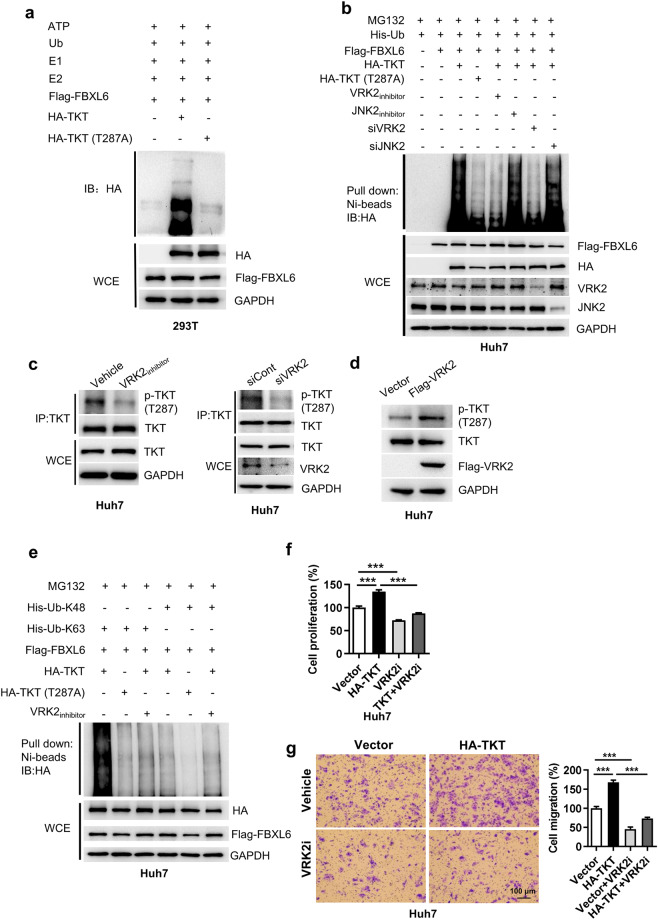Fig. 4. VRK2 is important for TKT phosphorylation at Thr287 and facilitates FBXL6-mediated TKT K63-linked ubiquitination and activation.
a HEK293T cells were transfected with HA-TKT and its mutant T287A, followed by IP purification and in vitro ubiquitination. Ubiquitinated TKT was detected with an anti-HA antibody. b Huh7 cells were transfected with the Flag-FBXL6 plasmid and the HA-TKT or HA-TKT (T287A) plasmid in the presence or absence of a CK1/VRK2 inhibitor (IC261, 5 μM), a JNK2 inhibitor (JNK inhibitor IX, 0.5 μM), siRNA targeting VRK2 (siVRK2) or siJNK2, followed by pulldown using Ni-NTA beads or direct IB with the indicated antibodies. c Inhibition or knockdown of VRK2 reduced TKT phosphorylation at Thr287. Huh7 cells were treated with a CK1/VRK2 inhibitor (IC261, 5 μM) or siVRK2 for 48 h and were then subjected to a pulldown assay using an anti-TKT antibody. d Huh7 cells were transfected with Flag-VRK2 for 48 h and were then harvested for Western blotting with an anti-pTKT (Thr287) antibody. e Huh7 cells were cotransfected with the Flag-FBXL6 plasmid and the HA-TKT or HA-TKT (T287A) plasmid with the indicated ubiquitin plasmids in the presence or absence of CK1/VRK2 inhibitor (IC261, 5 μM), followed by pulldown using Ni-NTA beads or direct IB with the indicated antibodies. f, g Huh7 cells were transfected with Flag-FBXL6 and treated with or without a CK1/VRK2 inhibitor (IC261, 5 μM) for 48 h and were then reseeded into 96-well plates for a cell proliferation assay (f) or into Transwell plates for a migration assay (g). n = 3–6, biological replicates. Scale bar, 100 μm. One-way ANOVA with Tukey’s multiple comparisons test was used. ***p ≤ 0.001.

